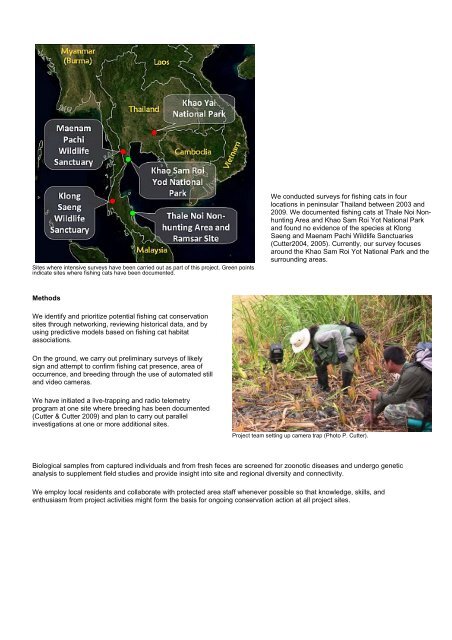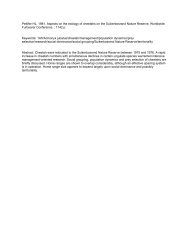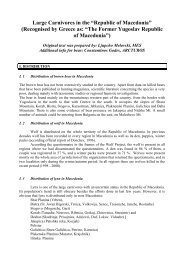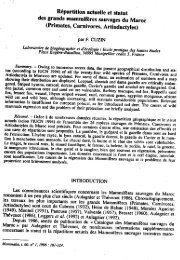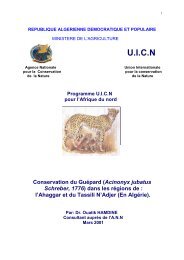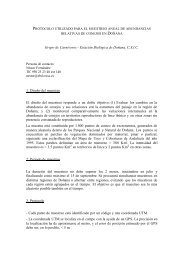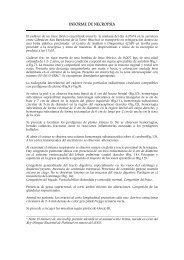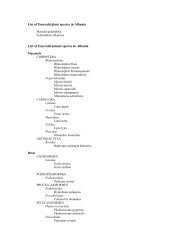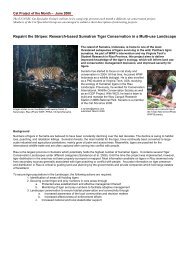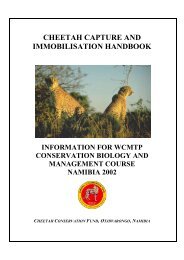Fishing Cat Conservation and Research Project - Cat Specialist Group
Fishing Cat Conservation and Research Project - Cat Specialist Group
Fishing Cat Conservation and Research Project - Cat Specialist Group
Create successful ePaper yourself
Turn your PDF publications into a flip-book with our unique Google optimized e-Paper software.
Sites where intensive surveys have been carried out as part of this project. Green points<br />
indicate sites where fishing cats have been documented.<br />
Methods<br />
We identify <strong>and</strong> prioritize potential fishing cat conservation<br />
sites through networking, reviewing historical data, <strong>and</strong> by<br />
using predictive models based on fishing cat habitat<br />
associations.<br />
On the ground, we carry out preliminary surveys of likely<br />
sign <strong>and</strong> attempt to confirm fishing cat presence, area of<br />
occurrence, <strong>and</strong> breeding through the use of automated still<br />
<strong>and</strong> video cameras.<br />
We have initiated a live-trapping <strong>and</strong> radio telemetry<br />
program at one site where breeding has been documented<br />
(Cutter & Cutter 2009) <strong>and</strong> plan to carry out parallel<br />
investigations at one or more additional sites.<br />
We conducted surveys for fishing cats in four<br />
locations in peninsular Thail<strong>and</strong> between 2003 <strong>and</strong><br />
2009. We documented fishing cats at Thale Noi Nonhunting<br />
Area <strong>and</strong> Khao Sam Roi Yot National Park<br />
<strong>and</strong> found no evidence of the species at Klong<br />
Saeng <strong>and</strong> Maenam Pachi Wildlife Sanctuaries<br />
(Cutter2004, 2005). Currently, our survey focuses<br />
around the Khao Sam Roi Yot National Park <strong>and</strong> the<br />
surrounding areas.<br />
<strong>Project</strong> team setting up camera trap (Photo P. Cutter).<br />
Biological samples from captured individuals <strong>and</strong> from fresh feces are screened for zoonotic diseases <strong>and</strong> undergo genetic<br />
analysis to supplement field studies <strong>and</strong> provide insight into site <strong>and</strong> regional diversity <strong>and</strong> connectivity.<br />
We employ local residents <strong>and</strong> collaborate with protected area staff whenever possible so that knowledge, skills, <strong>and</strong><br />
enthusiasm from project activities might form the basis for ongoing conservation action at all project sites.


